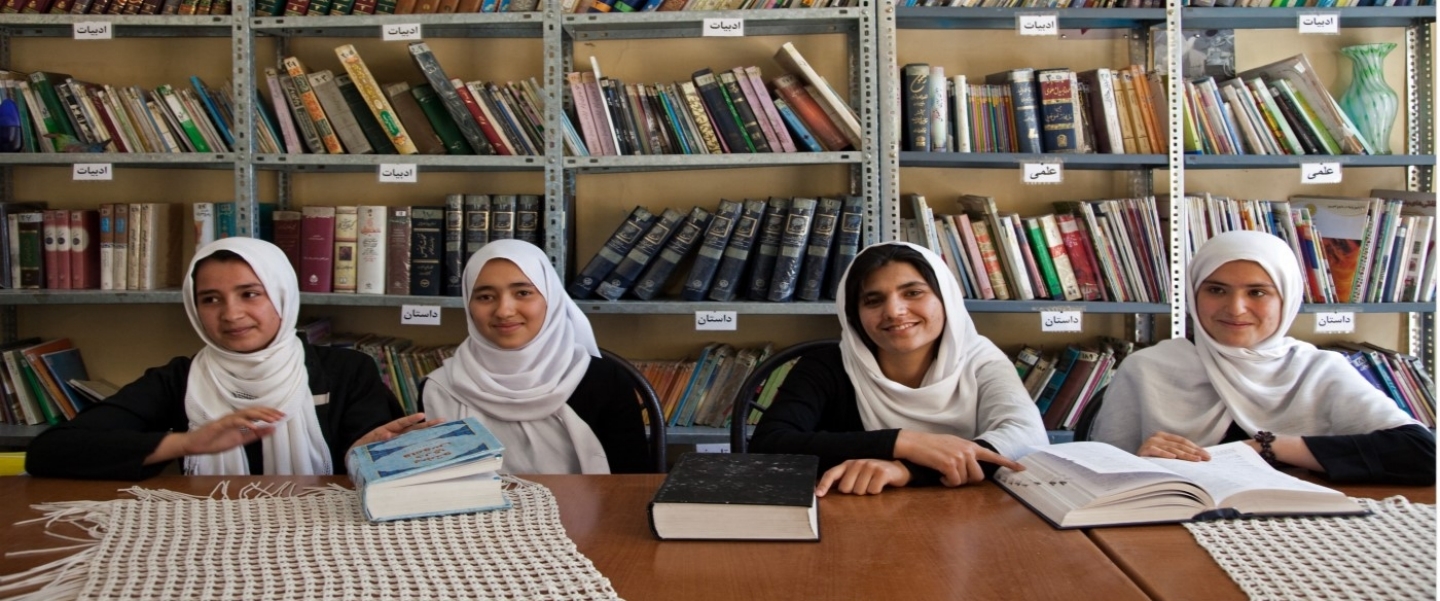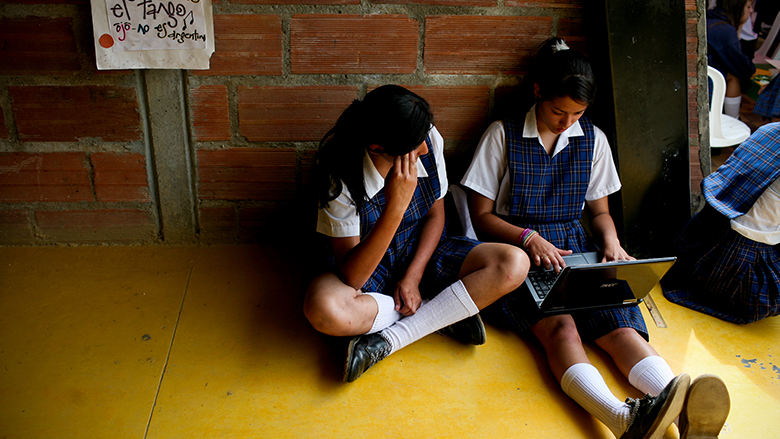Ensuring that all girls and young women receive a quality education is their human right, a global development priority, and a strategic priority for the World Bank.
Achieving gender equality is central to the World Bank Group twin goals of ending extreme poverty and boosting shared prosperity. As the largest financing development partner in education globally, the World Bank ensures that all of its education projects are gender-sensitive, and works to overcome barriers that are preventing girls and boys from equally benefiting from countries’ investments in education.
Girls’ education goes beyond getting girls into school. It is also about ensuring that girls learn and feel safe while in school; have the opportunity to complete all levels of education, acquiring the knowledge and skills to compete in the labor market; gain socio-emotional and life skills necessary to navigate and adapt to a changing world; make decisions about their own lives; and contribute to their communities and the world.
Both individuals and countries benefit from girls’ education. Better educated women tend to be more informed about nutrition and healthcare, have fewer children, marry at a later age, and their children are usually healthier, should they choose to become mothers. They are more likely to participate in the formal labor market and earn higher incomes. A recent World Bank study estimates that the “limited educational opportunities for girls, and barriers to completing 12 years of education, cost countries between US$15 trillion1 and $30 trillion in lost lifetime productivity and earnings.” All these factors combined can help lift households, communities, and countries out of poverty.
The Challenge
According to UNICEF estimates, around the world, 129 million girls are out of school, including 32 million of primary school age, and 97 million of secondary school age.
Globally, primary, and secondary school enrollment rates are getting closer to equal for girls and boys (90% male, 89% female). But while enrollment rates are similar – in fact, two-thirds of all countries have reached gender parity in primary school enrollment – completion rates for girls are lower in low-income countries where 63% of female primary school students complete primary school, compared to 67% of male primary school students. In low-income countries, secondary school completion rates for girls also continue to lag, with only 36% of girls completing lower secondary school compared to 44% of boys. Upper secondary completion rates have similar disparities in lower income countries, the rate is 26% for young men and 21% for young women.
The gaps are starker in countries affected by fragility, conflict, and violence (FCV). In FCV countries, girls are 2.5 times more likely to be out of school than boys, and at the secondary level, are 90% more likely to be out of secondary school than those in non-FCV contexts.
Both girls and boys are facing a learning crisis. Learning Poverty (LP) measures the share of children who are not able to read proficiently at age 10. While girls are on average 4 percentage points less learning-poor than boys, the rates remain very high for both groups. The average of Learning Poverty in in low- and middle- income countries is 55% for females, and 59% for males. The gap is narrower in low-income countries, where Learning Poverty averages about 93% for both boys and girls.
In many countries, enrollment in tertiary education slightly favors young women, however, better learning outcomes are not translating into better work and life outcomes for women. There is a large gender gap in labor force participation rates globally. It is especially stark in regions such as South Asia and the Middle East and North Africa, which have some of the lowest female labor force participation rates at 24% and 20% per region, respectively. These are appallingly low rates, considering what is observed in other regions like Latin America (53%) or East Asia (59%), which are still below rates for men.
Gender bias within schools and classrooms may also reinforce messages that affect girls’ ambitions, their own perceptions of their roles in society, and produce labor market engagement disparities and occupational segregation. When gender stereotypes are communicated through the design of school and classroom learning environments or through the behavior of faculty, staff, and peers in a child’s school, it goes on to have sustained impact on academic performance and choice of field of study, especially negatively affecting young women pursuing science, technology, engineering, and mathematics (STEM) disciplines.
Poverty is one of the most important factors for determining whether a girl can access and complete her education. Studies consistently reinforce that girls who face multiple disadvantages — such as low family income, living in remote or underserved locations or who have a disability or belong to a minority ethno-linguistic group — are farthest behind in terms of access to and completion of education.
Violence also prevents girls from accessing and completing education – often girls are forced to walk long distances to school placing them at an increased risk of violence and many experience violence while at school. Most recent data estimates that approximately 60 million girls are sexually assaulted on their way to or at school every year. This often has serious consequences for their mental and physical health and overall well-being while also leading to lower attendance and higher dropout rates. An estimated 246 million children experience violence in and around school every year, ending school-related gender-based violence is critical. Adolescent pregnancies can be a result of sexual violence or sexual exploitation. Girls who become pregnant often face strong stigma, and even discrimination, from their communities. The burden of stigma, compounded by unequal gender norms, can lead girls to drop out of school early and not return.
Child marriage is also a critical challenge. Girls who marry young are much more likely to drop out of school, complete fewer years of education than their peers who marry later. They are also more likely to have children at a young age and are exposed to higher levels of violence perpetrated by their partner. In turn, this affects the education and health of their children, as well as their ability to earn a living. Indeed, girls with secondary schooling are up to six times more likely to marry as those children with little or no education. According to a recent report, more than 41,000 girls under the age of 18 marry every day. Putting an end to this practice would increase women’s expected educational attainment, and with it, their potential earnings. According to the report’s estimates, ending child marriage could generate more than US$500 billion in benefits annually each year.
COVID-19 is having a negative impact on girls’ health and well-being – and many are at risk of not returning to school once they reopen. Available research shows that prevalence of violence against girls and women has increased during the pandemic – jeopardizing their health, safety and overall well-being. As school closures and quarantines were enforced during the 2014‐2016 Ebola outbreak in West Africa, women and girls experienced more sexual violence, coercion and exploitation. School closures during the Ebola outbreak were associated with an increase in teenage pregnancies. Once schools re-opened, many “visibly pregnant girls” were banned from going back to school. With schools closing throughout the developing world, where stigma around teenage pregnancies prevails, we will probably see an increase in drop-out rates as teenage girls become pregnant or married. As girls stay at home because of school closures, their household work burdens might increase, resulting in girls spending more time helping out at home instead of studying. This might encourage parents, particularly those putting a lower value on girls' education, to keep their daughters at home even after schools reopen. Moreover, research shows that girls risk dropping out of school when caregivers are missing from the household because they typically have to (partly) replace the work done by the missing caregiver, who might be away due to COVID-19-related work, illness, or death. Therefore, with the current COVID-19 pandemic, we might see more girls than boys helping at home, lagging behind with studying, and dropping out of school.




